Photos: 1914 Martial Arts Book for Women in Japan
By a woman for women
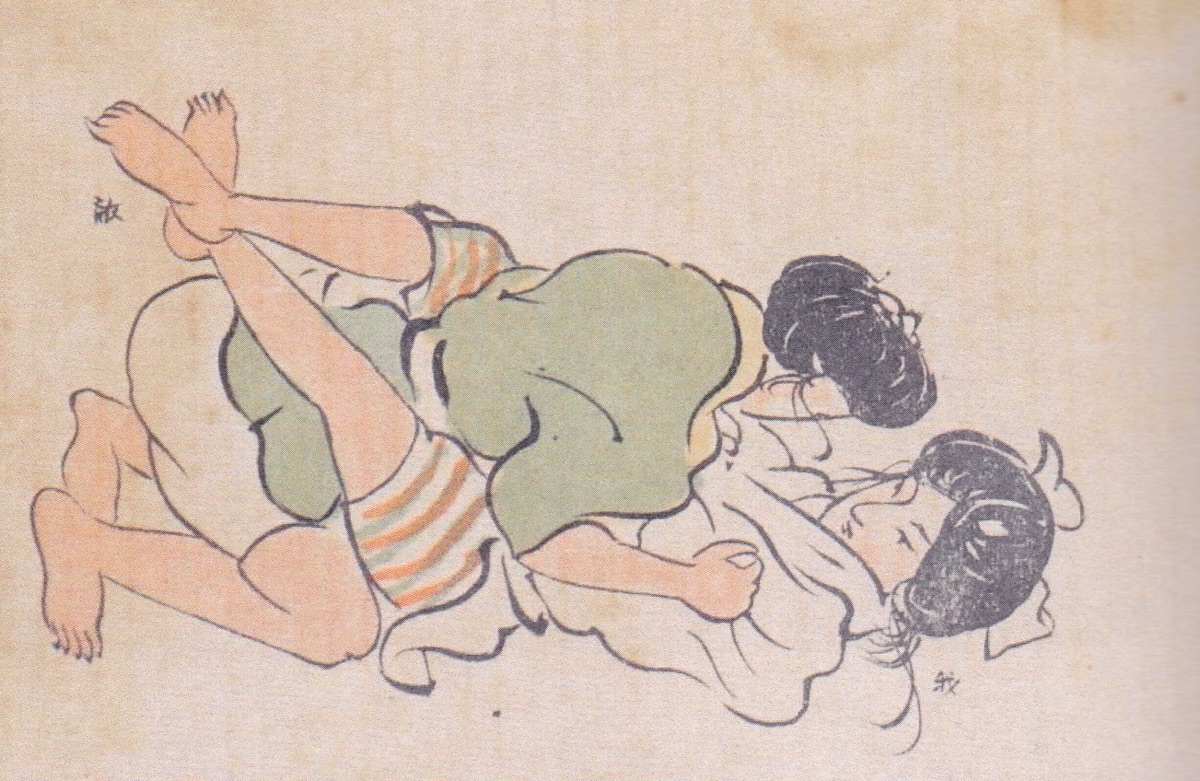
This Japanese martial arts text, published in May 1914, was written by a woman for women. It was recently translated into English and republished by Eric Shahan, a translator who specializes in translating 19th and early 20th century Japanese martial arts texts.
The book was written by Nobatake Yaeko, who wrote under the pen name Nohata Showa. The book says that she is part of a Women's Self-Defense League formed to combat a rise in violence. This drawing from the book shows an abdomen strangulation technique that can render an attacker trying to rape a woman unconscious.
Reverse joint lock
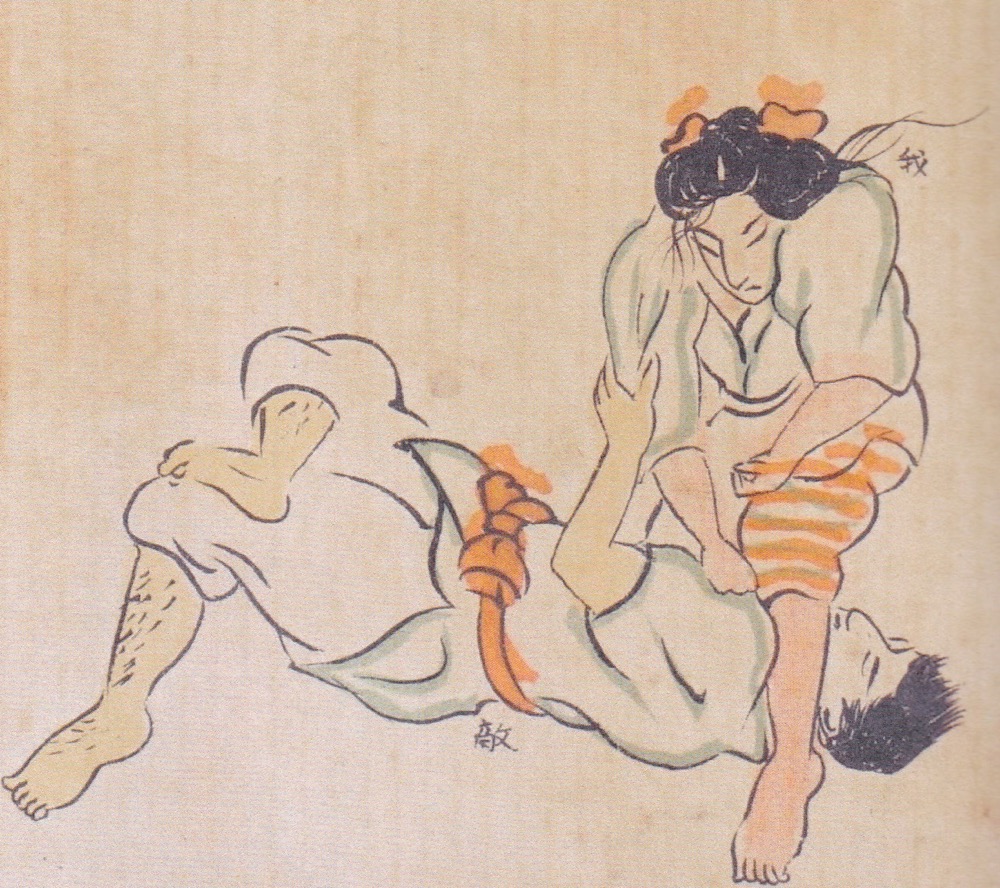
The book also shows a technique a woman can use to finish off an attacker who has been thrown down. She takes the attacker's hand in a "reverse joint lock," puts his arm behind her knee and squeezes, breaking his arm. The attempted rapist is not only foiled but suffers a broken arm.
Throw him over
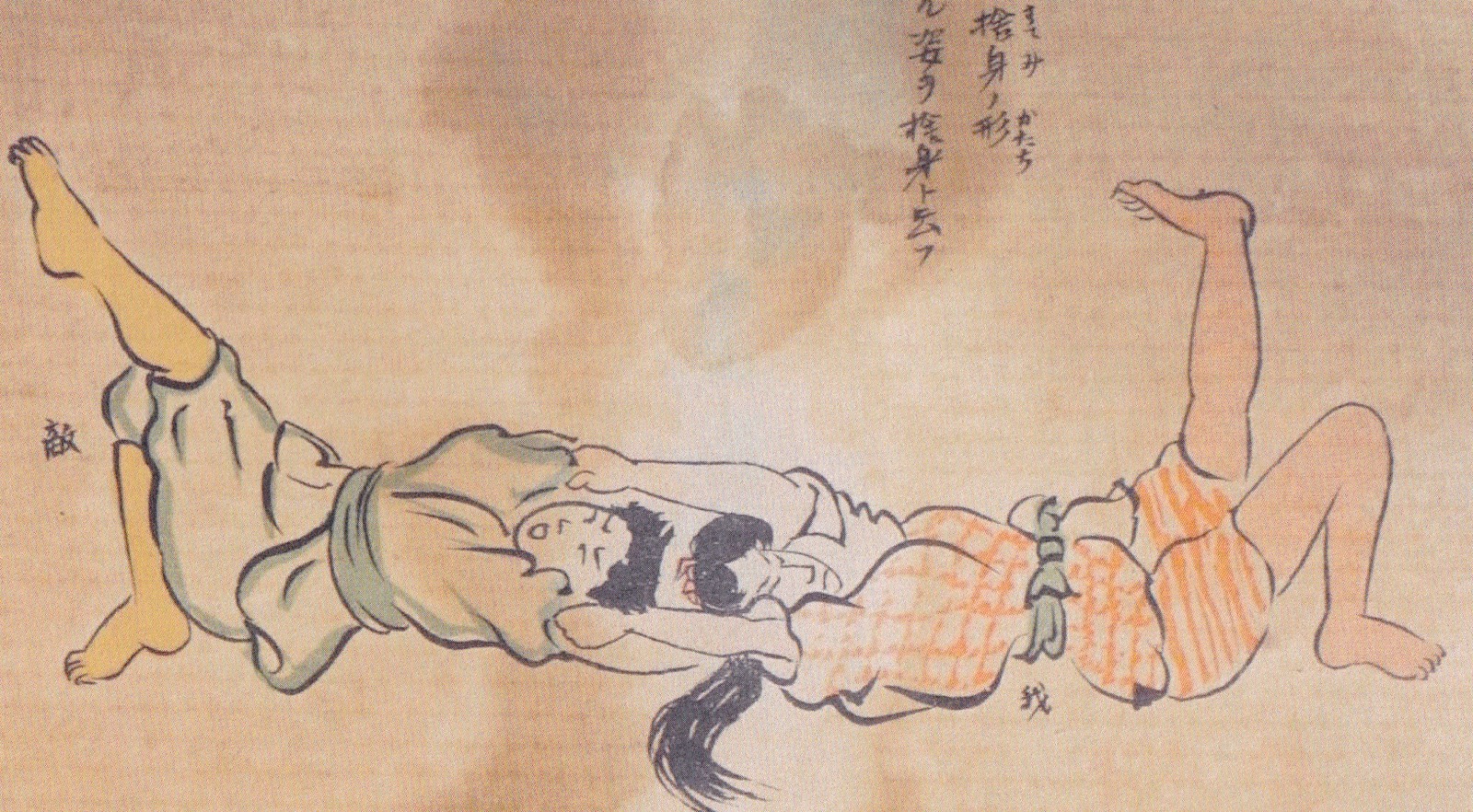
The force of the kick "where the thigh meets the hip," along with the pressure applied to the collar, results in the attacker being thrown behind the woman and left in a dazed state. The woman can flee or attack the man.
Kicking technique
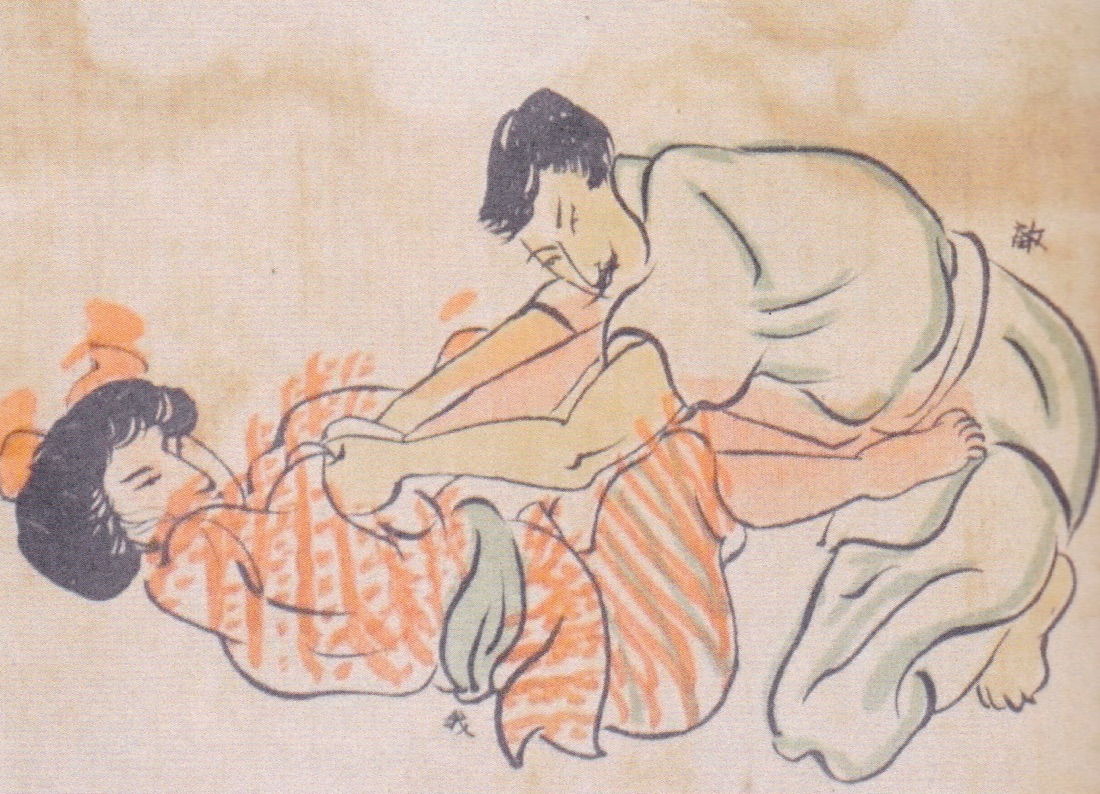
Another technique in the book shows how a woman can stop a rapist. In this technique, the woman grabs the attacker's collar at chest-height and kicks him "where the thigh meets the hip" (translation by Eric Shahan). If the woman applies pressure to the collar while performing the kick, the attacker is thrown over her.
Break in two
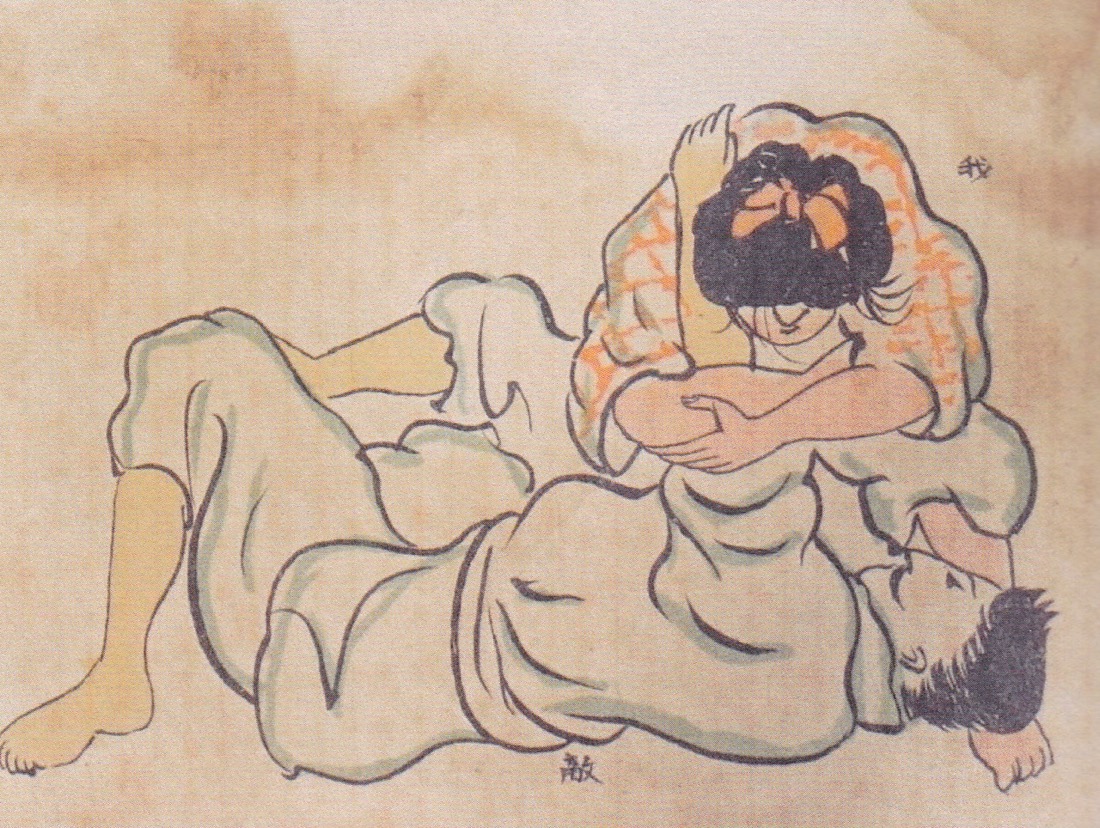
Another arm-breaking technique that can also finish off an attacker: She uses an arm lock to break the attacker's arm in two. After suffering a broken arm, the attacker will likely think twice before trying to rape another woman, the book notes.
Sweep off his feet

A technique shown in the book that can bring an attacker to the ground.
Weak points
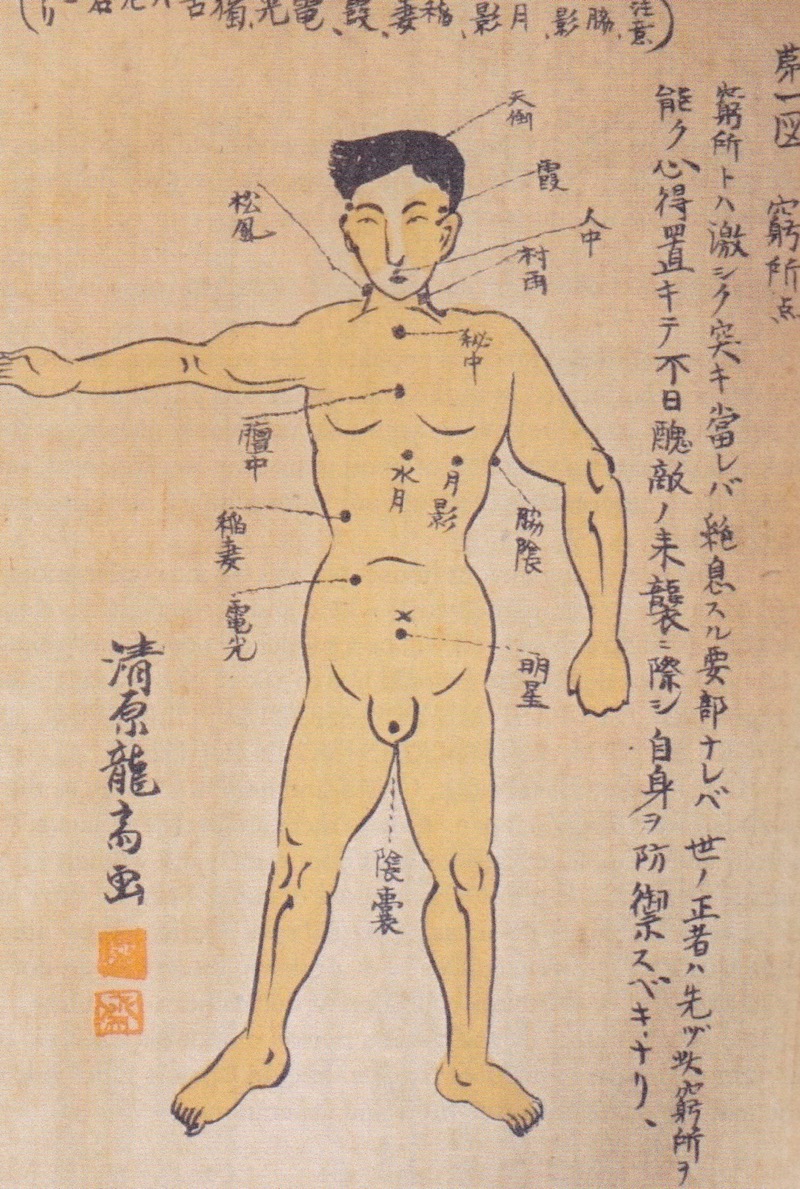
This chart illustrates Kyusho, which are points on a man's body that when struck hard can incapacitate him. "Good and proper people would do well to learn these points," Showa wrote in the book.
Sign up for the Live Science daily newsletter now
Get the world’s most fascinating discoveries delivered straight to your inbox.

Owen Jarus is a regular contributor to Live Science who writes about archaeology and humans' past. He has also written for The Independent (UK), The Canadian Press (CP) and The Associated Press (AP), among others. Owen has a bachelor of arts degree from the University of Toronto and a journalism degree from Ryerson University.










